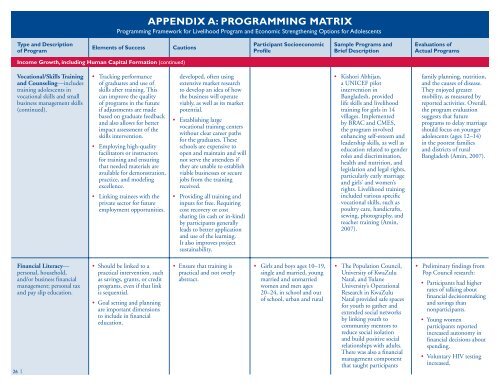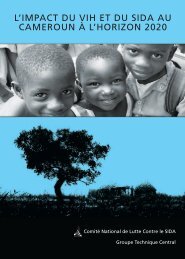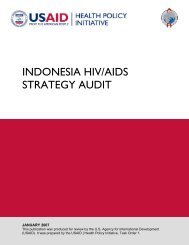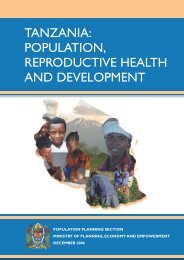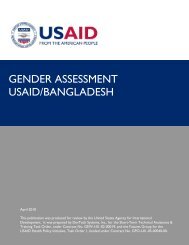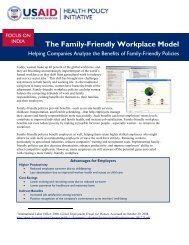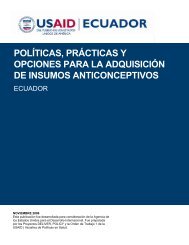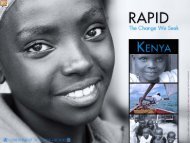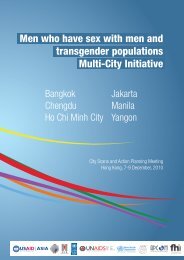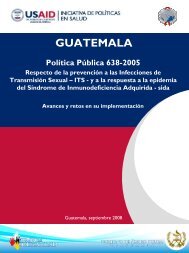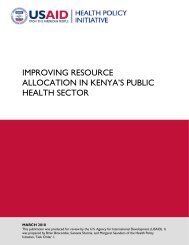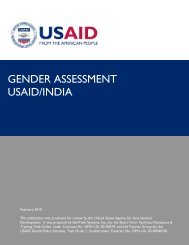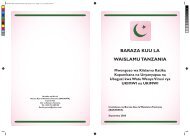LIVELIHOOD OPTIONS FOR GIRLS: - Health Policy Initiative
LIVELIHOOD OPTIONS FOR GIRLS: - Health Policy Initiative
LIVELIHOOD OPTIONS FOR GIRLS: - Health Policy Initiative
- No tags were found...
You also want an ePaper? Increase the reach of your titles
YUMPU automatically turns print PDFs into web optimized ePapers that Google loves.
APPENDIX A: PROGRAMMING MATRIXProgramming Framework for Livelihood Program and Economic Strengthening Options for Adolescents 1Type and Descriptionof ProgramElements of SuccessCautionsParticipant SocioeconomicProfile2Sample Programs and3Brief DescriptionEvaluations ofActual ProgramsIncome Growth, including Human Capital Formation (continued)Vocational/Skills Trainingand Counseling—includestraining adolescents invocational skills and smallbusiness management skills(continued).• Tracking performanceof graduates and use ofskills after training. Thiscan improve the qualityof programs in the futureif adjustments are madebased on graduate feedbackand also allows for betterimpact assessment of theskills intervention.• Employing high-qualityfacilitators or instructorsfor training and ensuringthat needed materials areavailable for demonstration,practice, and modelingexcellence.• Linking trainees with theprivate sector for futureemployment opportunities.developed, often usingextensive market researchto develop an idea of howthe business will operateviably, as well as its marketpotential.• Establishing largevocational training centerswithout clear career pathsfor the graduates. Theseschools are expensive toopen and maintain and willnot serve the attendees ifthey are unable to establishviable businesses or securejobs from the trainingreceived.• Providing all training andinputs for free. Requiringcost recovery or costsharing (in cash or in-kind)by participants generallyleads to better applicationand use of the learning.It also improves projectsustainability.• Kishori Abhijan,a UNICEF pilotintervention inBangladesh, providedlife skills and livelihoodtraining for girls in 14villages. Implementedby BRAC and CMES,the program involvedenhancing self-esteem andleadership skills, as well aseducation related to genderroles and discrimination,health and nutrition, andlegislation and legal rights,particularly early marriageand girls’ and women’srights. Livelihood trainingincluded various specificvocational skills, such aspoultry care, handicrafts,sewing, photography, andteacher training (Amin,2007).family planning, nutrition,and the causes of disease.They enjoyed greatermobility, as measured byreported activities. Overall,the program evaluationsuggests that futureprograms to delay marriageshould focus on youngeradolescents (ages 12–14)in the poorest familiesand districts of ruralBangladesh (Amin, 2007).Financial Literacy—personal, household,and/or business financialmanagement; personal taxand pay slip education.26 |• Should be linked to apractical intervention, suchas savings, grants, or creditprograms, even if that linkis sequential.• Goal setting and planningare important dimensionsto include in financialeducation.• Ensure that training ispractical and not overlyabstract.• Girls and boys ages 10–19, • The Population Council,single and married, young University of KwaZulumarried and unmarried Natal, and Tulane women and men ages University’s Operational20–24, in school and out Research in KwaZuluof school, urban and rural Natal provided safe spacesfor youth to gather andextended social networksby linking youth tocommunity mentors toreduce social isolationand build positive socialrelationships with adults.There was also a financialmanagement componentthat taught participants• Preliminary findings fromPop Council research:• Participants had higherrates of talking aboutfinancial decisionmakingand savings thannonparticipants.• Young womenparticipants reportedincreased autonomy infinancial decisions aboutspending.• Voluntary HIV testingincreased.


